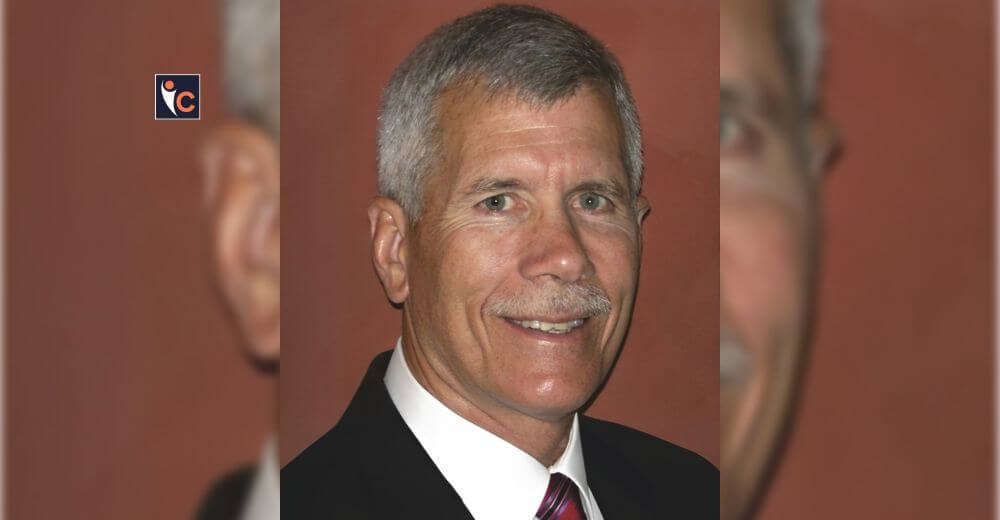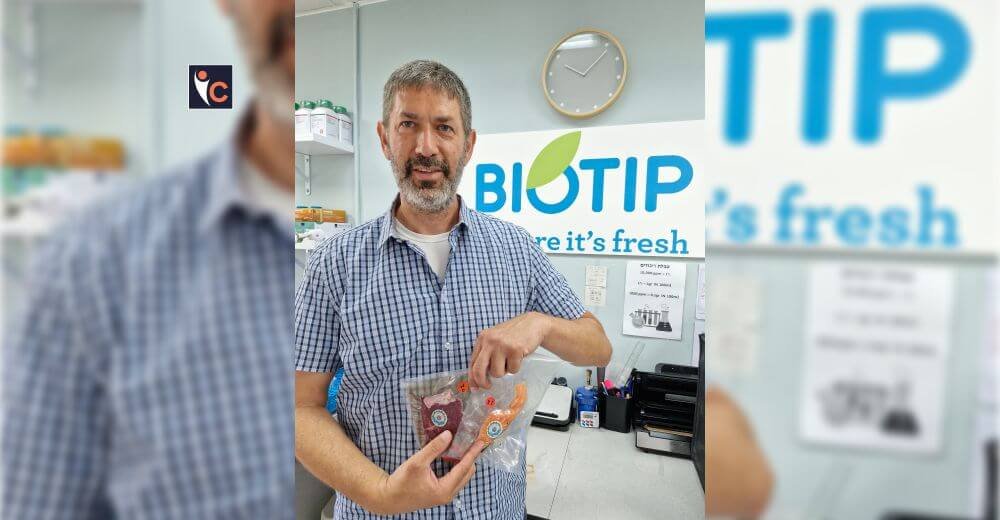When no tools are capable of solving a given problem, a man must be able to resort to neurotechnologies. Vibre Neurotechnologies abides by this philosophy by evaluating the mental fatigue of personnel involved in high-risk or high mental load jobs, such as—the energy sector, oil and gas, aviation, aerospace, surgery, and others related—as accidents in these workplaces are more likely to occur to precisely due to the accumulation of mental fatigue and the onset of micro sleep during work activities.
Through Neuroframe, an innovative software and a wearable device worn over like a headband—one can measure attention, mental fatigue and sleepiness during jobs that require high levels of concentration, thus helping you to prevent errors due to fatigue. The device captures brain data to provide real-time assessments that contain information on the worker’s mental state during the sequence of jobs performed.
In an interview with Insights Care, Raffaelle Salvemini, the CEO and Founder share Vibre’s journey to bringing this technology into enabling safer human interaction at high-risk workplaces.
Following are the excerpts from the interview:
Kindly tell us the source of inspiration. What led you to venture into the Neurotech industry?
Almost all the founders of Vibre Neurotechnologies have the same academic background: university studies in biomedical engineering. Through a series of coincidences, we met each other and identified a common interest in neurotechnologies, identifying a boundless potential in this field in future years. We have always been fascinated by the “decoding” of the human brain: a mysterious and fascinating machine. The dream was (and is) to bring this technology into everyday life, combining ever-smaller devices and real, practical needs. Starting in 2017, we began researching and developing solutions in various fields, trying to continuously test what the market was asking for.
Brief us about yourself and shed some light on your role and responsibility at the company.
I have a degree in Biomedical Engineering, 32 years old, I have been building companies since the age of 20. Inserted in 2020 in the Forbes Italia under 30 list. Today I hold the role of CEO at Vibre.
What are the mission, vision and values shared by the company?
We have always believed that neural interfaces could make a real contribution to the world. A technological revolution without comparison. Putting the human brain and mind at the center of everything. Usually, we tend to think of neurotechnologies as technology capable of “commanding” objects from a distance. We have always avoided this association, trying to carry on our philosophy: neurotechnologies must help man in activities in which there are no tools capable of solving a given problem.
Today our focus is on mental fatigue and drowsiness by monitoring personnel involved in high-risk jobs in energy, oil and gas companies. In the long term, we will introduce neurotechnologies in different application sectors, thanks to the possibility of miniaturizing the devices. In the coming years, devices designed by us over the last few years will be produced. Today we are at the first step of our plan. The goal is to land in different sectors. One of our solutions in the pipeline is the use of mental fingerprints as an authentication system.
Tell us about the core products and services that the company offers to support the needs of the clients/patients. How are these different from other companies in the market?
Using the most comfortable devices available on the market today, we evaluate the mental fatigue of personnel involved in high-risk or high mental load jobs, such as the energy sector, oil and gas, aviation, aerospace, surgery, Formula 1, etc. See, for example, the Windy Minds project conducted with Edison Spa or the publications made with hospitals in Italy.
One of the main causes of errors or accidents is precisely the accumulation of mental fatigue and the onset of micro sleep during work activities. To date, there are no systems capable of measuring these values, except by exploiting neural interfaces. We work on two different levels: analysis of entire company processes to identify critical points, correlating them with time slots, temperatures and any other parameters; real-time analysis by sending alerts.
One of the main differences is the autonomy of action: companies use our tools and the data devices supplied with complete autonomy, without our intervention. Secondly, we have managed to bring to the market a concrete solution that meets the needs of companies, so it is a B2B segment. Furthermore, we do not operate in the health sector, except by intervening with the health workers themselves. So we decided to verticalize companies from completely different sectors.
Brief us about the rising need for neurotechnology in the healthcare sector. How will it impact the way patients receive treatment and the clinical decisions taken by care providers?
With Vibre Neurotechnologies we work to identify critical issues in surgeons. About 70%-80% of errors that occur during surgical operations are caused by mental fatigue. Mental fatigue is a growing problem in every activity, from study to work and is likely to gradually lead to burnout problems. Neurotechnologies are today the only truly objective and valid tool to be able to prevent problems related to mental stress.
What specific R&D operations is your company leading at present? Why do you find them essential in developing or improving neurotech solutions?
Vibre Neurotechnologies follows the latest neuroscientific research in the world, translating them into practical solutions to be placed on the market. Internally, we are constantly developing new algorithms that allow us to refine our metrics and, consequently, our evaluations. One of the aspects that we pay the most attention to in our internal research is the identification of increasingly localized areas of the brain involved to produce micro devices, invisible and without any encumbrance. We believe that neurotechnologies will only be able to play a role in daily life when they become almost invisible.
In what way do you consider technological advances to be a pathway in conducting your company’s operations?
At Vibre we believe that the technological aspects to be evaluated in our processes are essential:
– Increasingly accurate and increasingly automated information
– Complete autonomy of the clients in the use of neurotechnologies (without being experts in neuroscience)
– Extreme miniaturization of the devices to have a convenience never seen before.
We are extremely focused on these three values, regardless of the sector in which we apply our solutions.
What endeavors is the company currently pursuing to improve its service measures for the clients/patients?
We collect feedback from the relevant departments of our client companies on a daily basis. It is important that the use of our devices and our software is easy and without any obstacles. These technologies are still being improved (even if they have been developing for more than sixty years) and therefore, depending on the customer, there may need to be met. In fact, the care we have towards our customers is precisely on the definition of simple use protocols suitable for their purposes.
What advice would you like to give to budding entrepreneurs and enthusiasts who desire to venture into the neurotech Industry?
I always give very precise advice: avoid being fascinated by superhero applications. In our journey, but without going too far in time even a few days ago, we met people who were more fascinated by what one might see in a science fiction film set in the year 3000. We need to focus on concrete solutions that can help companies and people, with something that until now could not be done. To give an example: controlling an industrial machine with remote thinking doesn’t make much sense. Yes, it’s fascinating. But the accuracy will never be as good as a classic controller. And the risk of error would be too high. And above all, why not control it with remote control and with your own hands.
How do you envision scaling the company’s services and operations in 2023 and beyond?
We have validated our monitoring solution (Neuroframe) in the last two years (from Covid onwards). Today we intend to scale up to medium and large companies, beyond the Italian borders.
Tell us about your service ‘BrainArt.’ How is it helping the audience to learn about Vibre?
BrainArt is a service that we launched in 2018 and is still very popular today among individuals and companies. It is a system capable of transforming “emotions” into abstract paintings. It was a project that we launched to get as much data as possible at the beginning and to viralize neurotechnologies in Italy. To date, tens of thousands of BrainArts have been collected and, consequently, the people who have touched this technology first-hand. Companies use BrainArt in their events to get a bigger audience and acquire more contacts. BrainArt uses listening to a piece of music as input and, after listening, a picture is produced (then printed on canvas when requested and associated with a scientific brochure that analyzes the experience). I think it’s noteworthy because it was an idea that allowed us to make ourselves known and make known, in a light way, a technology that is still little known.
Next Story: https://insightscare.com/petal-technology-the-future-of-telepathy-is-here/










